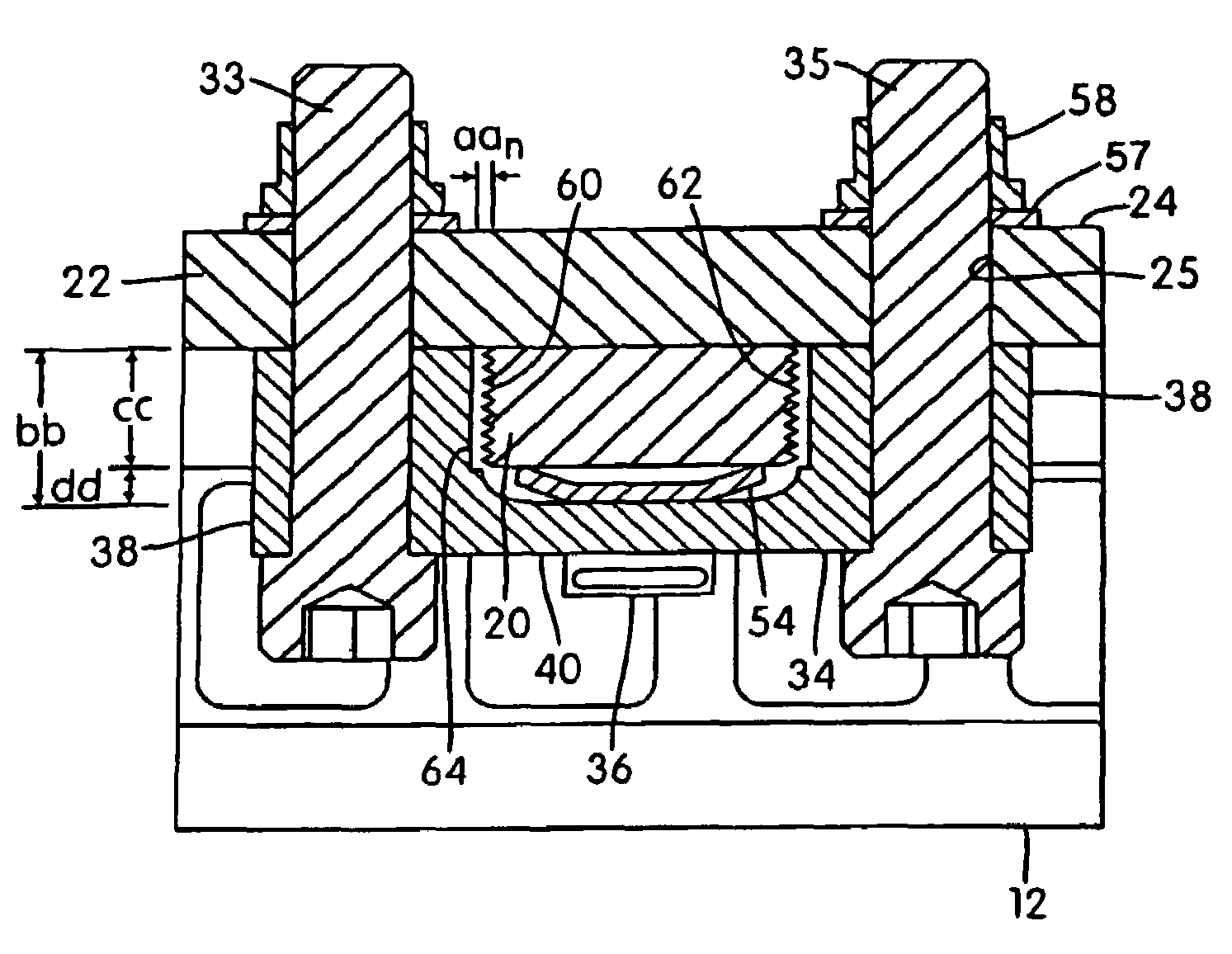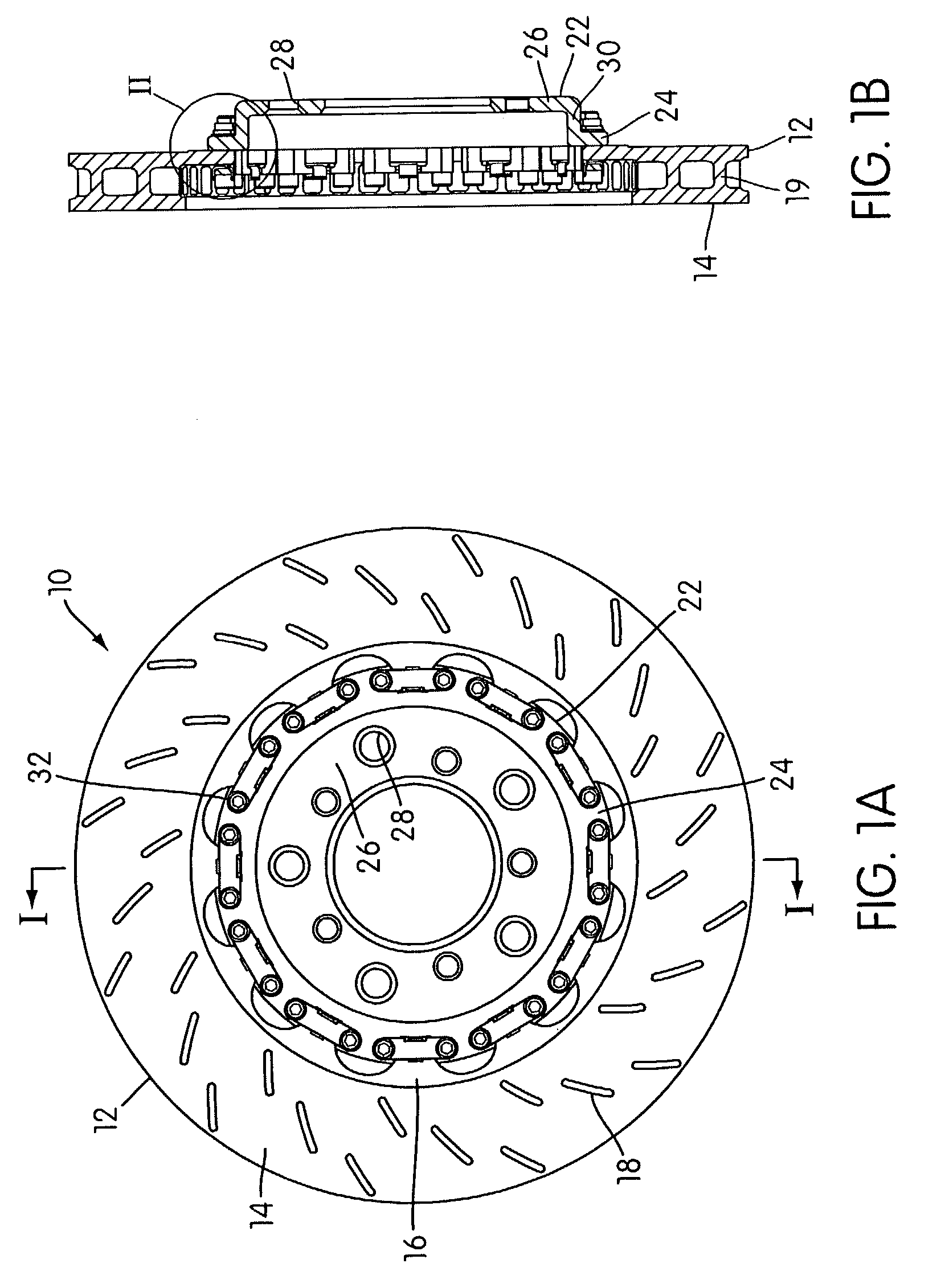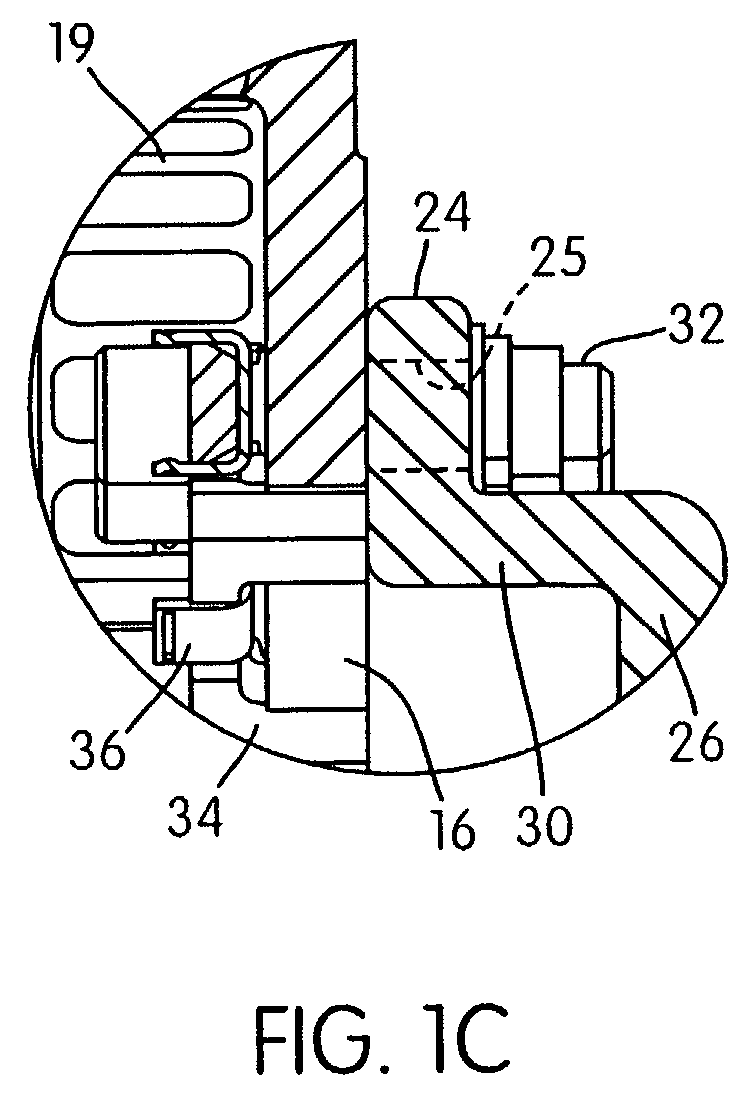Brake rotor attachment assembly that promotes in plane uniform torque transfer distribution
a technology of torque transfer and rotor, which is applied in the field of brake assembly, can solve the problems of thermal distortion of the rotor, high cost and time consumption, and the drawbacks of the hat rotor, and achieve the effects of promoting uniform torque transfer, reducing bending stress, and reducing bending stress
- Summary
- Abstract
- Description
- Claims
- Application Information
AI Technical Summary
Benefits of technology
Problems solved by technology
Method used
Image
Examples
Embodiment Construction
[0068]The brake assembly 10 seen in FIG. 1A is preferred for use on vehicles, including automobiles, racing vehicles, trucks, heavy duty trucks, motorcycles and the like. The vehicles suitable for use with this invention can include those vehicles having a gross vehicle weight of less than about 5,000 pounds, a gross vehicle weight of about 5,000 pounds to 12,000 pounds, and a gross vehicle weight of more than about 12,000 pounds, for example 30,000 pounds. However, the inventive concepts discussed herein can be used in any type of application that uses rotary brakes, including automotive, other types of motorized vehicles, or railcars.
[0069]FIG. 1A shows a rotor disc 12 formed as an annular plate having a braking surface 14 and an attachment flange 16. As known, the braking surface 14 preferably carries a high friction material or can be specially treated. The braking surface 14, as seen, has a plurality of shallow grooves 18 formed therein. These grooves 18 enhance braking, but ar...
PUM
 Login to View More
Login to View More Abstract
Description
Claims
Application Information
 Login to View More
Login to View More - R&D
- Intellectual Property
- Life Sciences
- Materials
- Tech Scout
- Unparalleled Data Quality
- Higher Quality Content
- 60% Fewer Hallucinations
Browse by: Latest US Patents, China's latest patents, Technical Efficacy Thesaurus, Application Domain, Technology Topic, Popular Technical Reports.
© 2025 PatSnap. All rights reserved.Legal|Privacy policy|Modern Slavery Act Transparency Statement|Sitemap|About US| Contact US: help@patsnap.com



